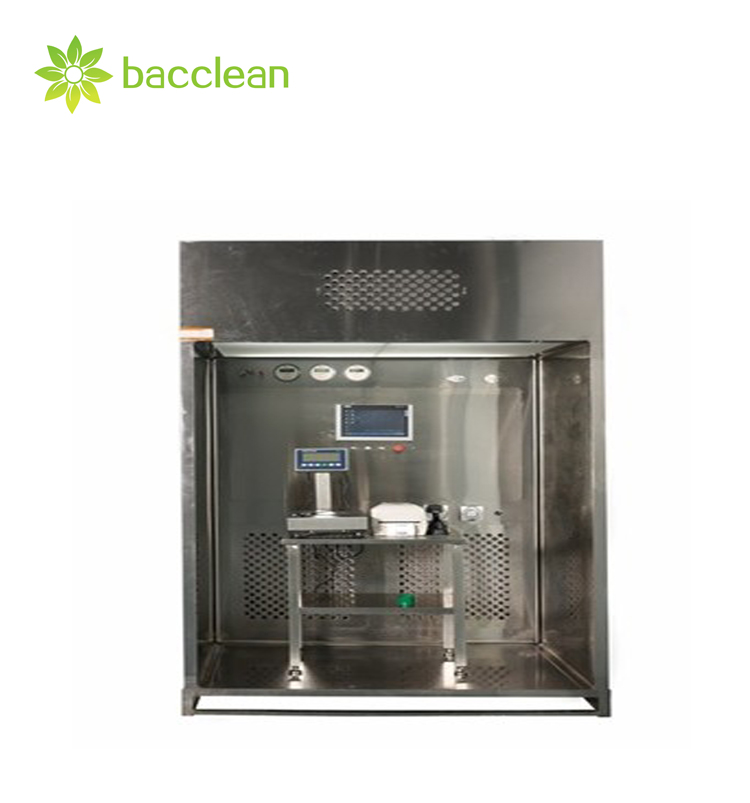What are the protective measures for negative pressure weighing rooms?
What are the protective measures for negative pressure weighing rooms?Negative pressure weighing rooms are special air purification equipment used in the pharmaceutical, food, electronics, and other industries. It is mainly used to prevent dust from spreading during product weighing and protect operators and the environment from pollution. Negative pressure weighing rooms usually adopt the design principle of vertical unidirectional flow. After the air in the room is filtered by a high-efficiency filter, it flows vertically downward at a certain wind speed to form a clean working area. At the same time, through the negative pressure system, the air pressure in the room is lower than the external environment to ensure that dust does not leak to the outside. In practical applications, the protective measures for negative pressure weighing rooms are mainly the following: 1. Protective measures High-efficiency filtration: The negative pressure weighing room is equipped with a high-efficiency filter, and the filtration efficiency is usually above 99.99%, which can effectively filter tiny particles in the air. For example, for particles with a particle size of more than 0.3 microns, the filtration effect is significant. This prevents dust from entering the breathing area of the operator and protects his health. Negative pressure control: Through precise pressure sensors and control systems, ensure that a certain negative pressure state is always maintained in the room. Generally speaking, the negative pressure difference is between 5-15Pa. This can prevent dust from leaking into the external environment and avoid pollution in the surrounding area. Airflow organization: Reasonable airflow organization design allows air to evenly cover the entire working area after entering from the high-efficiency filter, and then be discharged through the return airport. This ensures that the dust is taken away in time and does not accumulate indoors. 2. Maintenance method Regular maintenance: To ensure the protective effect of the negative pressure weighing room, the equipment needs to be maintained regularly. Including replacing high-efficiency filters, checking the accuracy of pressure sensors and control systems, cleaning the indoor surface, etc. It is generally recommended to perform comprehensive maintenance every 3-6 months. Personnel training: Operators should receive professional training to understand the working principles and operating procedures of the negative pressure weighing room. During use, strictly abide by the operating procedures and correctly wear personal protective equipment such as masks and gloves. Environmental monitoring: Regularly monitor the environment around the negative pressure weighing room to ensure that there is no dust leakage. Equipment such as dust particle counters can be used for detection. Once a problem is found, take timely measures to deal with it. In short, the negative pressure weighing room provides a safe and clean environment for product weighing in the pharmaceutical, food, electronics, and other industries through protective measures such as efficient filtration, negative pressure control, and reasonable airflow organization. At the same time, through regular maintenance, personnel training, and environmental monitoring, it can ensure that the protective effect of the equipment is always maintained in the best condition. |

 German
German French
French Italian
Italian Portuguese
Portuguese Japanese
Japanese Korrean
Korrean Russian
Russian




